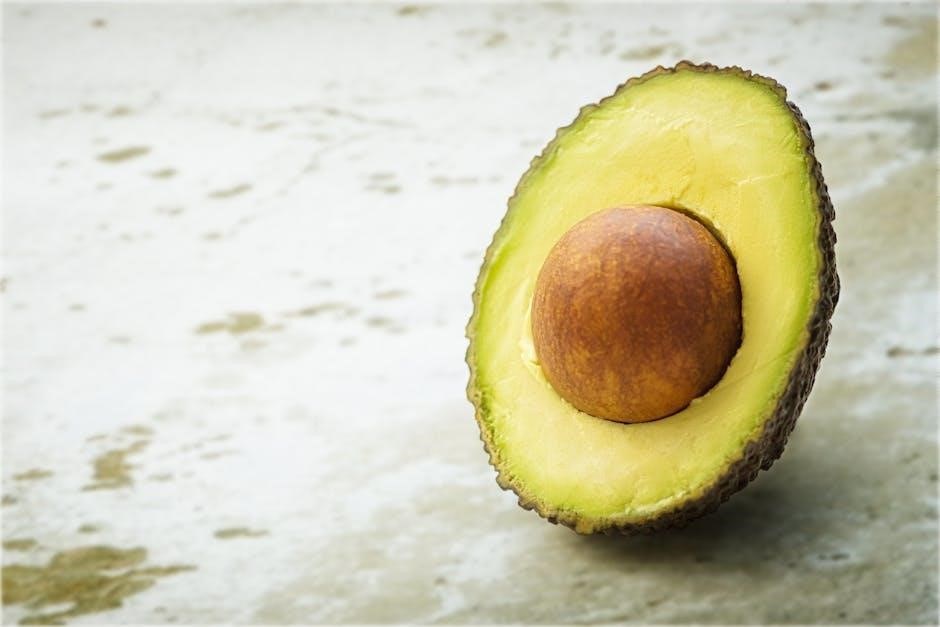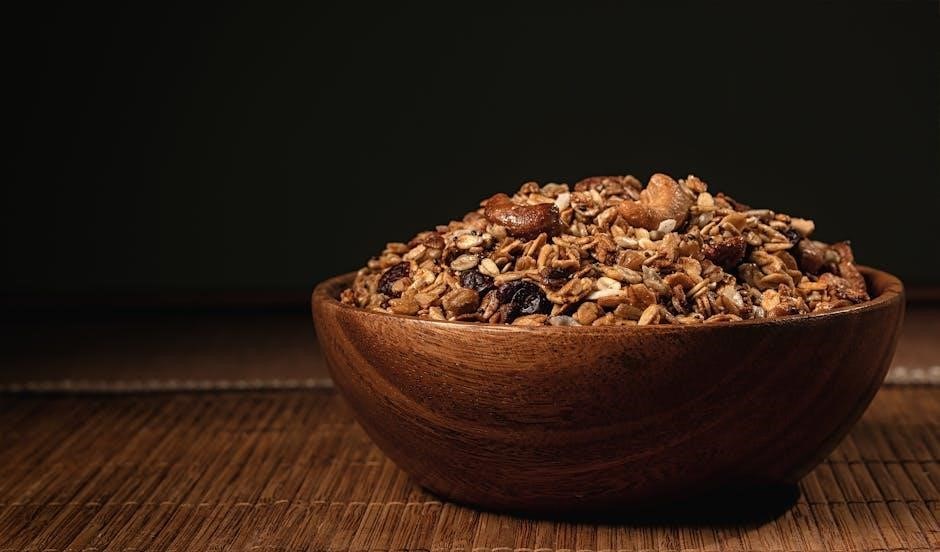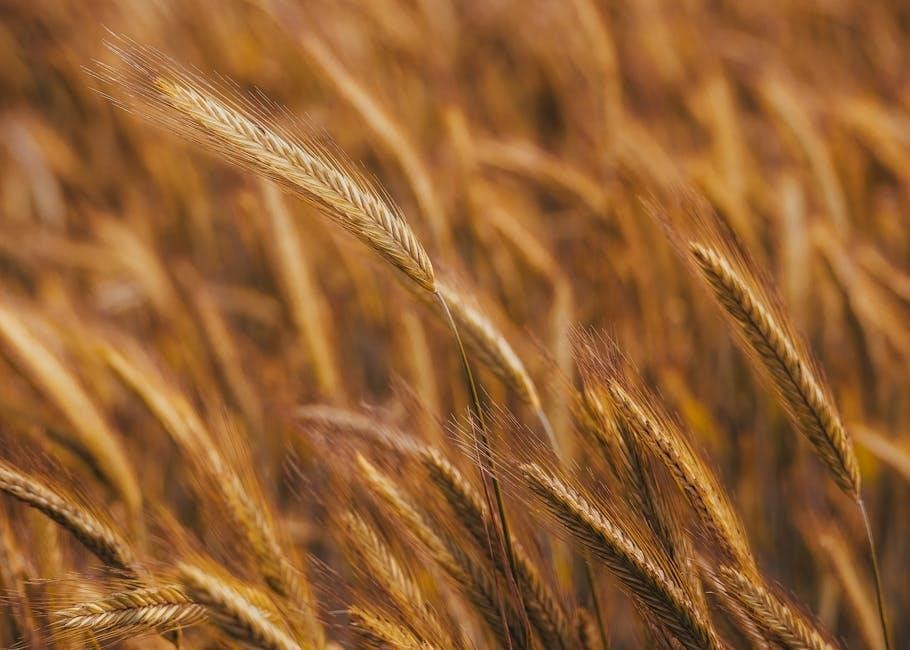Insoluble fiber is a type of dietary fiber that does not dissolve in water, playing a key role in promoting digestive health. It helps prevent constipation, supports bowel regularity, and may reduce the risk of chronic diseases like colorectal cancer. Found in whole grains, vegetables, and fruits with skin, insoluble fiber adds bulk to stool, aiding smooth digestion.
What is Insoluble Fiber?
Insoluble fiber, also known as non-soluble fiber, is a type of dietary fiber that does not dissolve in water. It is primarily found in plant-based foods and plays a crucial role in maintaining digestive health. Unlike soluble fiber, insoluble fiber does not break down in the digestive system and instead adds bulk to stool, helping it move through the intestines more quickly. This helps prevent constipation and supports regular bowel movements. Insoluble fiber is found in whole grains, vegetables, fruits with skin, nuts, seeds, and legumes. It is essential for maintaining a healthy gut and preventing digestive disorders. By acting as a natural laxative, insoluble fiber helps cleanse the gastrointestinal tract and promotes overall digestive well-being.
Importance of Insoluble Fiber in the Diet
Insoluble fiber plays a vital role in maintaining a healthy digestive system and overall well-being. It helps promote regular bowel movements by adding bulk to stool, preventing constipation, and ensuring waste moves smoothly through the intestines. This type of fiber also cleanses the digestive tract by pushing undigested food through the system, reducing the risk of colon-related issues. A diet rich in insoluble fiber supports gut health, which is linked to a stronger immune system and reduced inflammation. Additionally, it helps prevent hemorrhoids and diverticulitis by softening stool and reducing pressure on the intestinal walls. The Dietary Guidelines for Americans recommend consuming at least 14 grams of total fiber per day, with insoluble fiber being a significant contributor to meeting this goal. Incorporating insoluble fiber into meals can significantly enhance digestive function and reduce the risk of chronic diseases.

Top Food Sources of Insoluble Fiber
Whole grains, fruits with skin, vegetables, nuts, seeds, and legumes are rich in insoluble fiber, providing essential nutrients and promoting digestive health.
Fruits High in Insoluble Fiber
Fruits are excellent sources of insoluble fiber, particularly those with edible skins or seeds. Apples, pears, and berries like blackberries and raspberries are rich in this type of fiber. Dried fruits such as apricots, figs, and prunes also provide significant amounts. These fruits not only add bulk to the stool but also support healthy digestion. Incorporating these into your diet can help maintain regular bowel movements and overall digestive health. Eating fruits with their skins ensures maximum fiber intake, making them a natural and tasty way to boost insoluble fiber consumption.
Vegetables Rich in Insoluble Fiber
Vegetables are a cornerstone of insoluble fiber intake, with leafy greens like broccoli, spinach, and kale leading the way. Root vegetables such as potatoes, carrots, and sweet potatoes are also excellent sources. Cruciferous vegetables like Brussels sprouts and cauliflower contribute significantly to insoluble fiber content. These vegetables help add bulk to the stool, promoting regular bowel movements and preventing digestive issues like constipation. Incorporating raw or minimally cooked vegetables into meals ensures optimal fiber retention, supporting overall gut health and digestive function. A diverse vegetable-rich diet is essential for meeting daily fiber goals and maintaining a balanced digestive system.
Whole Grains as a Source of Insoluble Fiber
Whole grains are a rich and natural source of insoluble fiber, making them a vital component of a healthy diet. Grains like whole wheat, rye, quinoa, and brown rice are packed with this type of fiber. The bran layer in whole grains is particularly high in insoluble fiber, which helps add bulk to the stool and promote regular bowel movements. Incorporating whole grains into meals not only enhances digestion but also supports overall gut health. They are also associated with a reduced risk of chronic diseases, such as heart disease and type 2 diabetes. Choosing whole grains over refined options ensures a higher intake of insoluble fiber, contributing to a balanced and nutritious diet.
Nuts and Seeds High in Insoluble Fiber
Nuts and seeds are excellent sources of insoluble fiber, providing numerous health benefits. Almonds, with about 3.5 grams of insoluble fiber per ounce, are a top choice. Pumpkin seeds, chia seeds, and flaxseeds also rank high, offering significant amounts of insoluble fiber. These foods help promote digestive health by adding bulk to the stool, preventing constipation, and supporting regular bowel movements. Walnuts, sunflower seeds, and pistachios are additional options, each contributing to a healthy gut. Incorporating nuts and seeds into meals is a simple way to boost insoluble fiber intake, improving overall digestion and reducing the risk of chronic diseases. They are versatile and can be added to snacks, salads, or baked goods for added nutrition. Moderation is key, as they are calorie-dense but nutrient-rich.
Legumes and Their Insoluble Fiber Content
Legumes are a rich source of insoluble fiber, making them a valuable addition to a healthy diet. Lentils, for instance, contain approximately 2.9 grams of insoluble fiber per cup. Chickpeas, black beans, and kidney beans also provide significant amounts, contributing to digestive health. These foods help promote regular bowel movements and prevent constipation. Additionally, legumes like lima beans and navy beans offer notable insoluble fiber content, supporting overall gut function. Incorporating legumes into meals not only enhances fiber intake but also provides essential nutrients. They are versatile and can be used in soups, salads, or as main dishes. With their high insoluble fiber content, legumes are a great way to support a balanced diet and improve digestive well-being. Their nutritional benefits make them a staple in many cuisines worldwide.

Benefits of Insoluble Fiber
Insoluble fiber aids in preventing constipation, promoting regular bowel movements, and supporting digestive health. It also helps with weight management and reduces the risk of chronic diseases.

Prevention of Constipation
Insoluble fiber plays a crucial role in preventing constipation by adding bulk to stool and speeding up its passage through the intestines. This reduces the risk of constipation and ensures regular bowel movements.
Foods rich in insoluble fiber, such as whole grains, vegetables, and fruits with skin, promote a smooth digestive process. They help soften stool and improve consistency, making it easier to pass without strain.
By incorporating these foods into your diet, you can maintain a healthy digestive system and avoid the discomfort associated with constipation. Additionally, staying hydrated is essential for insoluble fiber to function effectively.
Supporting Digestive Health
Insoluble fiber is essential for maintaining a healthy digestive system by cleaning the gastrointestinal tract and preventing the buildup of harmful substances. It helps move food through the intestines, reducing the risk of bacterial overgrowth and infections.
Foods high in insoluble fiber, such as whole grains, fruits, and vegetables, promote the growth of beneficial gut bacteria, supporting a balanced gut microbiome. This can improve overall digestive function and reduce inflammation in the digestive tract.
Regular consumption of insoluble fiber-rich foods also helps prevent conditions like diverticulitis and hemorrhoids by maintaining regular bowel movements and preventing pressure on the intestinal walls. Staying hydrated further enhances these benefits, ensuring optimal digestive health.
Role in Weight Management
Insoluble fiber plays a significant role in weight management by increasing satiety and reducing overall calorie intake. Foods rich in insoluble fiber, such as whole grains, vegetables, and fruits, add bulk to meals, making them feel more filling.
This type of fiber slows down digestion, allowing the body to absorb nutrients more efficiently and preventing rapid spikes in blood sugar levels. By keeping you fuller for longer, insoluble fiber helps reduce cravings and snacking between meals.
Additionally, high-fiber diets are often lower in calories but higher in volume, making it easier to maintain a healthy weight. Incorporating insoluble fiber into meals can also improve metabolism and support a balanced diet, further aiding in weight management.
Reducing the Risk of Chronic Diseases
Insoluble fiber plays a crucial role in reducing the risk of chronic diseases, such as heart disease, type 2 diabetes, and colorectal cancer. By promoting regular bowel movements, it helps remove harmful substances from the digestive system, lowering the risk of colon-related disorders.
The bulk-forming properties of insoluble fiber also contribute to better blood sugar control and healthier cholesterol levels. This can significantly lower the risk of cardiovascular diseases and metabolic syndrome. Additionally, diets rich in insoluble fiber are associated with a reduced risk of certain cancers, particularly colorectal cancer, due to its cleansing effect on the gastrointestinal tract.
Incorporating insoluble fiber from whole grains, vegetables, and fruits into your diet can therefore provide long-term health benefits, helping to prevent and manage chronic conditions effectively.

Practical Tips for Incorporating Insoluble Fiber
Start by gradually adding insoluble fiber-rich foods to your diet to avoid digestive discomfort. Pair insoluble fiber with soluble fiber sources for better balance and hydration is key.
Gradual Increase in Fiber Intake
A gradual increase in insoluble fiber intake is essential to avoid digestive discomfort such as bloating or gas. Start by adding small portions of high-fiber foods like whole grains, vegetables, and nuts to your meals. Allow your gut microbiota to adjust over a week or two. For instance, replace refined grains with whole grains and introduce a variety of fruits and vegetables slowly. This approach helps your body adapt to the increased fiber consumption without causing unpleasant side effects. Pairing these changes with adequate hydration further supports smooth digestion and maximizes the benefits of insoluble fiber. Consistency is key to developing a balanced and fiber-rich diet.
Pairing Insoluble Fiber with Soluble Fiber
Combining insoluble and soluble fiber sources creates a balanced diet that maximizes digestive health benefits. Soluble fiber, found in foods like oats and apples, dissolves in water, forming a gel that slows digestion and stabilizes blood sugar. Insoluble fiber, from sources like whole grains and vegetables, adds bulk to stool and promotes regular bowel movements. Together, they enhance nutrient absorption and support overall gut function. Examples of effective pairings include oatmeal with nuts or berries, which blend soluble and insoluble fibers. This combination helps maintain a healthy digestive system and prevents issues like constipation or diarrhea. A varied intake ensures both types of fiber work synergistically to support optimal health.
Hydration Tips for Fiber Consumption
Adequate hydration is essential for maximizing the benefits of insoluble fiber. Water helps soften stool and prevents fiber from causing digestive discomfort or bloating. Aim to drink at least 8-10 glasses of water daily, increasing intake with higher fiber consumption. Start meals with water-rich foods like fruits or salads to aid digestion. Avoid sugary drinks and opt for herbal teas or water to maintain hydration levels. Proper hydration ensures that insoluble fiber moves smoothly through the digestive system, preventing constipation and supporting overall gut health. Staying hydrated complements the natural cleansing effects of fiber, promoting a balanced and efficient digestive process.

Identifying High-Fiber Foods on Nutrition Labels
Check the Nutrition Facts panel for “Dietary Fiber” to identify high-fiber foods. Look for products with at least 5 grams of fiber per serving, as they qualify as “High Fiber” sources. This ensures you’re selecting foods rich in insoluble fiber to support digestive health and meet daily nutritional needs effectively.
Understanding the Nutrition Facts Panel
The Nutrition Facts panel provides essential information about dietary fiber content. It lists “Total Fiber,” which includes both soluble and insoluble fiber. To identify high-fiber foods, look for products with at least 5 grams of total fiber per serving, as they are labeled “High Fiber.” Additionally, check the percentages of the Daily Value (DV) for fiber, which is 28 grams for adults. Foods with 10-19% DV are “Good Sources,” while those with 20% or more are “Excellent Sources.” Understanding these labels helps consumers make informed choices to incorporate more insoluble fiber-rich foods, such as whole grains, vegetables, and fruits, into their diet for better digestive health and overall wellness.
Daily Value for Dietary Fiber
The Daily Value (DV) for dietary fiber is set at 28 grams per day for adults. This benchmark helps consumers gauge the nutrient’s intake. Foods providing at least 10% of the DV (2.8 grams) are considered good sources, while those offering 20% or more (5.6 grams) are excellent sources. When reviewing nutrition labels, aim for products meeting these thresholds to ensure adequate insoluble fiber intake. This guideline aligns with recommendations to support digestive health and reduce chronic disease risks, emphasizing the importance of whole, fiber-rich foods in a balanced diet.
Incorporating insoluble fiber-rich foods into your diet supports digestive health, prevents constipation, and reduces chronic disease risks. Emphasize whole, unprocessed foods for optimal benefits and a balanced lifestyle.
Insoluble fiber is abundantly found in whole, unprocessed foods such as fruits, vegetables, whole grains, nuts, seeds, and legumes. Fruits like apples (with skin), berries, and dried apricots are excellent sources. Vegetables, particularly leafy greens, broccoli, and carrots, also contribute significantly. Whole grains like wheat bran, brown rice, and quinoa are rich in insoluble fiber, while nuts and seeds, such as almonds and chia seeds, provide additional benefits. Legumes, including beans and lentils, are another great source. These foods help maintain digestive health by adding bulk to stool and promoting regular bowel movements. Incorporating these into your diet can enhance overall wellness and reduce the risk of chronic diseases. Referencing a detailed list of insoluble fiber foods PDF can help identify and prioritize these nutrient-rich options.

Encouragement for a Balanced Diet
A balanced diet rich in insoluble fiber is a simple yet powerful way to enhance overall health and well-being. By incorporating foods like whole grains, fruits, vegetables, nuts, and seeds, individuals can support digestive health, prevent constipation, and reduce the risk of chronic diseases. Even small changes, such as adding a serving of berries or swapping refined grains for whole grains, can make a significant impact. Aiming to meet the daily recommended intake of fiber ensures long-term benefits for the body. Encouraging others to adopt these habits fosters a healthier community and promotes a lifestyle focused on prevention and wellness. With so many delicious and versatile options available, it’s easy to make insoluble fiber a cornerstone of your diet.
